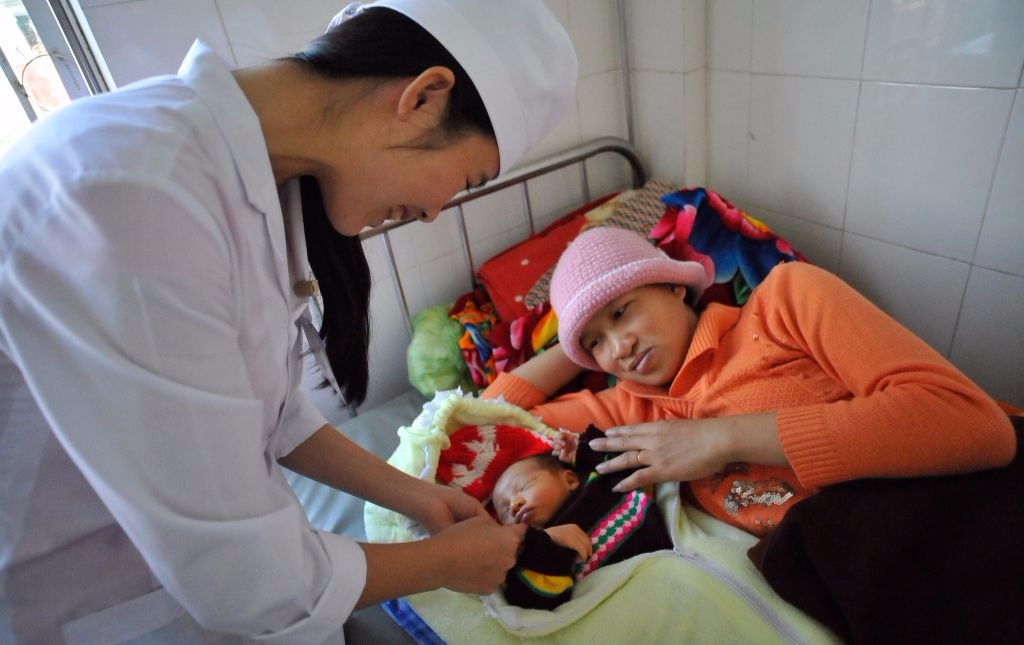
Mekong Countries Strengthen Health Resilience to Climate Change
Climate change poses threats to public health in the Greater Mekong Subregion, which is already experiencing hotter weather, longer dry seasons, and changing rainfall patterns.
In response, three countries in the Lower Mekong Basin—Cambodia, Lao People’s Democratic Republic (Lao PDR), and Viet Nam—are working together to get a better understanding of the relationship between climate change and human health. They have stepped up efforts to identify vulnerabilities and adaptation options, including strengthening national and regional surveillance and health systems to address climate-sensitive diseases. The Asian Development Bank (ADB) is supporting these efforts through a regional technical assistance project.
Effects of global warming and potential health risks
Climate change is expected to have a wide range of health impacts. Weather variability may be increasing, resulting in more severe weather events that occur in greater frequency.
Communities living along the Mekong River have for generations adapted to the very large seasonal and yearly fluctuations in its water level: very low flows in the dry season and extensive flooding in the wet season. However, an increase in this natural variability can endanger lives, infrastructure, as well as food production and other human systems.
More frequent and severe droughts can reduce crop yields and water supply. The Mekong River reached its lowest level in 90 years during a severe drought in 2016.
Large populations that occupy coastal and low-lying areas are especially vulnerable to sea level rise and severe flooding.
Viet Nam in particular is at-risk for sea level rise and saline water intrusion into farmlands because of its extensive coastline and river deltas. Its highlands are prone to flashfloods because of the soil’s poor water retention properties.
In August 2011, Cambodia suffered the worst inland flooding in decades when heavy monsoon rains caused the Mekong River and Tonlé Sap Lake to swell.
In the Lao PDR, the most vulnerable areas to flooding are the flat lands along the Mekong River. The Vientiane plain in the central region is susceptible to mainstream flooding from the river.
Changes in temperature and rainfall patterns affect the habitat of disease carriers like insects and increase the incidence of such diseases as malaria and dengue. Cambodia and the Lao PDR have a high burden of vector-borne diseases. In recent years, more than 150,000 cases of dengue were reported annually. Viet Nam has also seen higher incidents of dengue, with Ha Noi experiencing a 400% increase in cases in 2017.
Climate change may be adding to the challenge of stopping the spread of drug-resistant malaria. A strain that is resistant to artemisinin-based combination therapy was first identified in western Cambodia in 2008, and has spread to northeastern Thailand, southern Lao PDR, and southern Viet Nam.
Changing weather patterns can also affect other health issues. Frequent and intense storms, typhoons, and droughts may cause injuries and deaths, water contamination, and even food shortages. Malnutrition, which is already a significant threat especially in Cambodia and the Lao PDR, and diarrhea incidence may increase. Heat waves in urban areas reduce air quality and increase respiratory infections and heat strokes.
Among the most vulnerable groups are the poor, the elderly, women, and children. Migrant populations who live in temporary settlements also face high health risks. These people often have limited capacity to adapt to the adverse effects of climate change because of poverty, low educational attainment, and poor access to health care.
Prolonged extreme weather events is likely to affect the rural poor disproportionately, as many of them still depend on subsistence farming.
The World Health Organization sees climate change contributing to about 250,000 deaths per year globally between 2030 and 2050. It estimates the direct costs to health at $2 billion to $4 billion per year by 2030.
Health threats from climate change will likely put further pressure on countries’ health systems and their capacity to prevent, monitor, and control outbreaks of diseases.
Strengthening health resilience
Adaptation options to address health risks from climate change may be categorized into three broad groups: information and knowledge support, health system strengthening, and infrastructure development and planning. Studies show that prevention is a more effective strategy to merely responding to the negative effects of climate change.
With assistance from ADB and cofinanced by the Nordic Development Fund, Cambodia, Lao PDR, and Viet Nam are building up science-based knowledge on climate threats to health and strengthening public health systems and response to climate impacts.
The project, Strengthening Resilience to Climate Change in the Health Sector in the Greater Mekong Subregion, supports collaboration among academic and research institutions and government authorities, and improve the capacity of governments to address these threats by developing adaptation options.
It provides training to public health staff on climate-related challenges to strengthen community resilience and emergency preparedness. Each country is developing a team of trainers and a training module to be delivered at the national and provincial levels.
Each country will also conduct a vulnerability and adaptation assessment and further develop their national health adaptation planning. In the Lao PDR, the University of Health Science is completing assessments in five high-risk provinces: Attapeu, Khammouane, Luang Prabang, Oudomxay, and Saravane. Viet Nam has also identified five high-risk provinces: Thai Binh, Nam Dinh, Ha Tinh, Kon Tum and Ben Tre.
Cambodia is finalizing arrangements to begin vulnerability and adaptation assessments, focusing on Siem Reap and Strung Treng provinces.
These assessments will produce a list of adaptation options for each country, which may include proposed policies, strategies, projects, and preliminary costing.
The project will also develop modeling and forecasting of climate change-related health effects. It will map out a risk atlas to show the long-term health impacts of climate change.
Furthermore, the project is proposing prefeasibility studies on existing surveillance systems in each country to facilitate the integration of climate and weather data and analysis, and the development of early warning systems.
